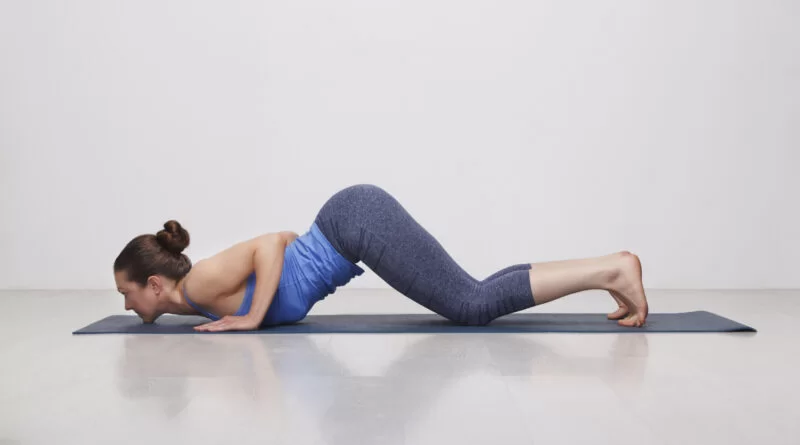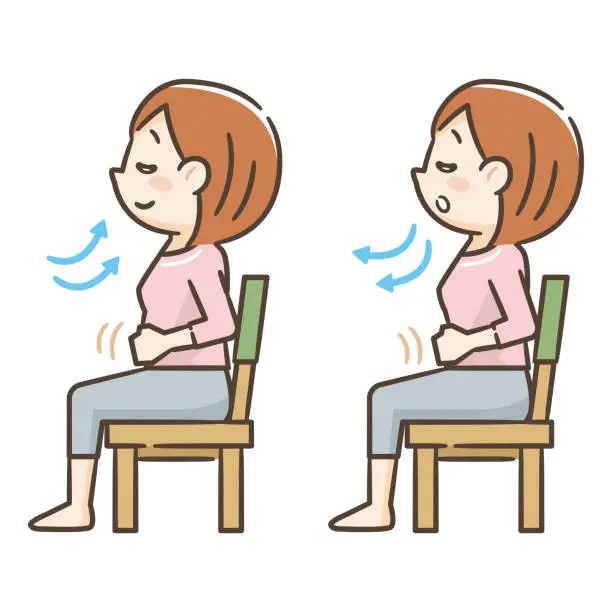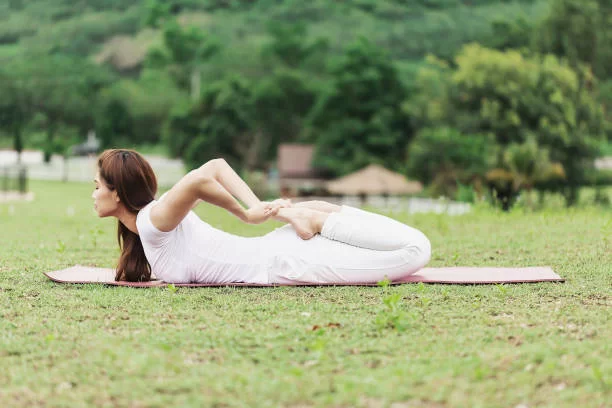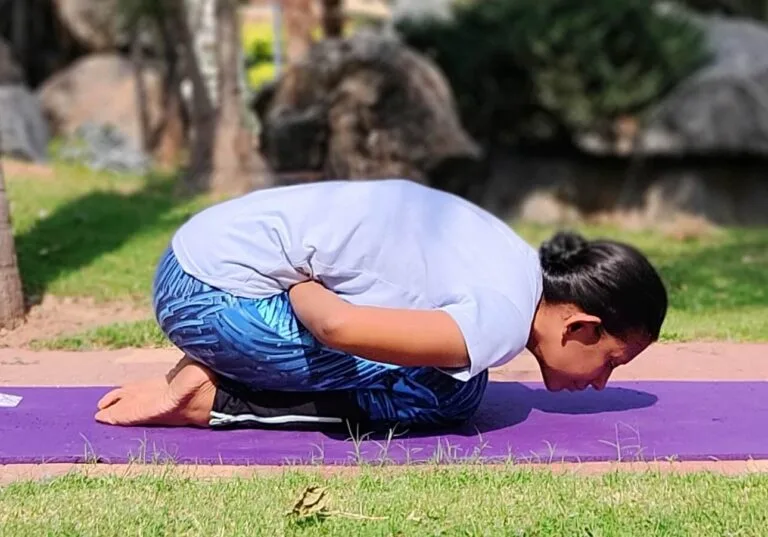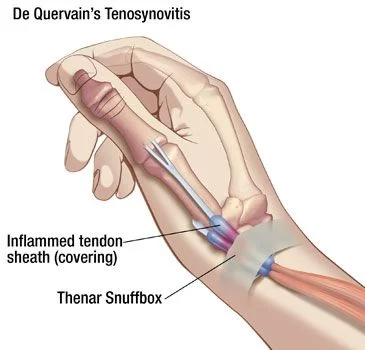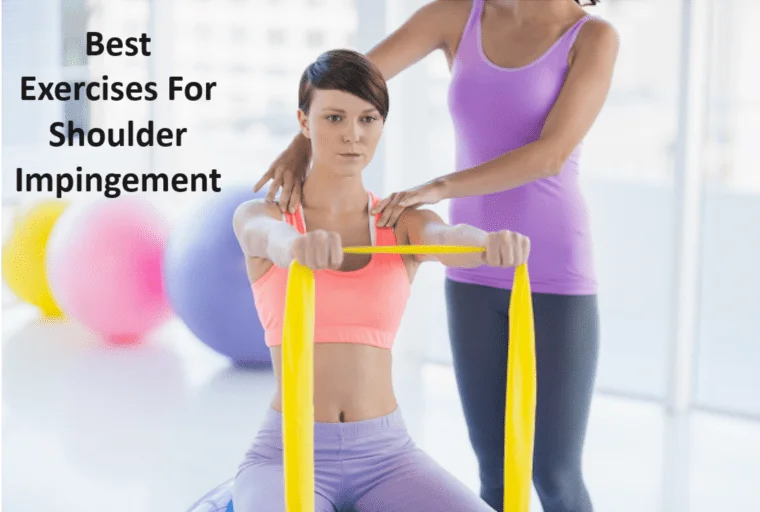Ashtanga Namaskara
What is Ashtanga Namaskara?
Ashtanga Namaskara, also known as Eight Limbed Salutation or Eight Parts of the Body Touching the Ground, is a yoga pose that is commonly performed as part of the Sun Salutation sequence in Ashtanga Yoga.
In this pose, the practitioner starts in a plank position with the body straight and the arms extended. Then, the knees are lowered to the floor, followed by the chest and chin, while keeping the buttocks lifted. The hands are placed next to the chest with the fingers pointing forward, and the elbows are kept close to the body. The eight parts of the body touching the ground are the two feet, two knees, two hands, chest, and chin.
This pose is often used as a transition between the plank and cobra or upward-facing dog poses, and it helps to build strength in the arms, shoulders, and chest while stretching the spine and neck. It is also believed to activate the solar plexus chakra, which is associated with personal power and confidence.
Regardless, Ashtanga Namaskara is an alternate pose to the Chaturanga Dandasana, which needs adequate strength in the wrist to assist the posture. Thus, a person can create their power from the very basic level via the everyday method of Ashtanga Namaskara.
Separated from wrist strengthening, this asana is widely practiced for gaining a flexible backbone that keeps the brain at its top. This, adds to better cognitive and physical coordination. Thus, Ashtanga Namaskara is the pose in which the 8th body parts. Such as both feet, both knees, both hands, chest, and either the chin(the chest) in contact with the floor.
Namaskara, in Ashtanga Namaskara, is a traditional way of greeting, bowing, or paying admiration to the geriatric, expounders, or ideals in Hinduism. Regardless, Ashtanga Namaskara is one of the series of the Surya Namaskara, which is performed to pay consideration to the Hindu divinity Sun.
How To Do Ashtanga Namaskara
Begin by reaching into the Plank posture. Your palms are well-stretched and deep-seated. Your toes are well on the floor and your heels apart.
Now, exhale and decrease your chest down, knees, and shoulder to the floor. While reaching down engage your core strengths and slowly reach the pose.
Your elbows should be in the area of the ribs. The shoulder should be in among the palms and be rolled up along to allow the development of the chest.
From here, increased the hips and let your abdomen and mid-torso engage completely so that, either your chin or forehead touches the floor.
Assure that your stomach is pulled in, with a slight upraised arch in your entire back. Hold here and breathe slowly for a few minutes or as per the comfort. Then inhale and slowly raised your chin, chest, and shoulder, leaving the belly and knees up into the Plank pose.
Ashtanga Namaskara video
Beginner’s Tips
Primary body structures can provoke Ashtanga Namaskara practice with the Cat posture, which needs few effort than Chaturanga Dandasana to avoid any other accident.
A person with rigid shoulders might face some trouble in unlocking the chest. So, one should not embellish the rolling of the shoulder past theirs.
To have an excellent or praise arch in the entire back the point of flexibility, which would be unavailable to the newly registered practitioner. Hence, By decreasing the space between the pelvis and the floor one can practice Ashtanga Namaskara.
In case of connecting the floor via the chin or with the forehead, one should turn their neck. hence, newbies with not that level of flexibility in the neck can simply try to feel the floor without any force.
Ashtanga Namaskara Benefits
- Massages Abdominal Organs
Augmenting the pelvis in a path in Ashtanga Namaskara pushes the abdominal inside while rehearsing. Such Movement causes a massaging 1 impact on the abdominal organs, which enhances their functioning. However, it also detoxifies them in the prolonged run.
- Regulates Endocrine Functions
The enhanced level of physical activity in this position has a regulatory effect on the various endocrine glands 2 of the body.
This further directs glands like Pancreas, Adrenal, Thyroid, and Pituitary glands, etc to secrete the required hormones so the metabolism can work in the best possible way.
- Makes Spine strong and flexible
The repetitious and everyday training of this Asana makes the backbone change its shape while going and returning from the posture. This enhances the range of musculoskeletal aspect, which additionally tone them up. Hence, adds to the strength of the backbone.
4. Strengthens Upper Body
Weight adjustment during the, descending into the pose, and coming back from the pose needed virtually every muscle of the torso. Such flow tone up the muscles and enhance bone viscosity if practiced regularly. Hence, strengthens the Upper body.
5. Stimulates Chakras
Ashtanga Namaskara is one of the asanas that targets extra additional than one chakra. Everyday practice with appropriate breathing methods under the guidance of a skilled yoga teacher can produce Mooladhara (Root) Chakra, Manipura (Solar Plexus) Chakra, and Swadishthana (Sacral) Chakra. Each one has its ample outcomes.
Precautions
A person with the condition of lower back or arthritis should not overlay stress in producing an arch in the back. It would be defamatory to accomplish so. One should attend to their body here.
It is the normal perspective that we can accomplish the posture in one go, but in doing that practitioners sometimes prefer to hurry. However, it could delocalize certain joints or strain some muscles. One should never dive and return, slow, to and from the pose, respectively.
The weight of your torso should not be helped by the chest. This could provoke unrest in breathing. Thus, one should allow the weight on both hands equally and the chest to just feel the floor. While you bring down your torso to the ground avoid reeling your elbows to the externals. Try to keep them beside the ribs.
Props and Modifications
Lethargy or weakened abdominal muscles create it harder to hold the posture for a long. Hence, the practitioner can place a wooden block in among the thigh. By embracing the block one can achieve the necessary strength to keep the position. However, it even assists the core muscles to engage as per their capacity.
Individuals with sensitive knees find it hard to remain in a contact with the floor for too long. So, one can place a soft blanket to reduce inflammation during the posture.
Practitioners having irritation in placing their chest and chin on the ground can use a piece of soft cloth to insulate the situation. This will shift the focus on enhancing the balance of the posture.
Contraindications
A person with Carpal Tunnel Syndrome should avoid doing this asana. The compression over the median nerve could provoke weakness and numbness in the hand while practicing.
Females with a pregnancy period after the first trimester should refrain from accomplishing Ashtanga Namaskara.
Practitioners who have undergone any sort of surgery should avoid doing this asana. Holding needs the involvement of core muscles, which might be harmful to the person.
One should also avoid the Ashtanga Namaskara practice if there is a case of wrist, neck, or shoulder injury. Pressure during the asana practice could worsen the past condition.
Conclusion
Ashtanga Namaskara, also known as Eight Limbed Salutation, is a yoga pose that is part of the Sun Salutation sequence in Ashtanga Yoga. This pose involves eight parts of the body touching the ground and helps build strength while stretching the spine and neck. It is a great transition pose and is believed to activate the solar plexus chakra.
However, by opting for some differences in the base posture one can even increase his/her level and can practice the variation given above.
Hence, Ashtanga Namaskara is an all-around health and wellness posture to be practiced.
FAQ
1. What is another name for Ashtanga Namaskara?
Ashtanga Namaskar another name is a knee-chest-chin pose.
The name arrives from the Sanskrit words, ash, meaning “8th,” Anga, meaning “part” or “limb,” and namaskar, meaning “bowing” or “greeting.” Ashtanga namaskar may even be known in English as the knee-chest-chin posture.
2. Do we salute in Ashtanga namaskara?
This posture is even known as the Salutation with 8th Limbs. Ashta means 8th and Anga means position while Namaskar means salutation. This name arrives from the body touching the ground in 8th place during the pose. You connect the ground with your chin, palms, chest, feet, and knees.
3.What is benefit of Ashtanga namaskara?
The practice of this asana assists strengthen the leg and arm muscles. The practice of Sun salutation assists strengthen the back and aids metabolism. Sun salutation may support enhanced brain function by furnishing fresh oxygenated blood to the brain.
4. How to do Ashtanga Namaskara?
Ashtanga Namaskara must be done accurately for the greatest health advantages. Allow us to roll out our mats and learn how to accomplish Ashtanga Namaskara. However, lie down on the mat in a prone position(face down position), i.e. sleep on your stomach. Subsequently, bring an in-depth breath and augment your body upwards in a plank position. Your elbows will be almost the ribs below the shoulders. Ensure you lift your hips, buttocks, and abdomen upwards, your abdomen is pulled in, and the back is slightly arched, as indicated in the picture above. The chin, chest, knees, and toes will be on the ground floor. While holding your breath, hold this position as prolonged as you are comfortable. Breathe out and slowly lower your buttocks and abdomen, position your arms sideways, and comfort.
5. What are the contraindications of Namaskarasana?
This asana should be avoided by individuals suffering from sciatica. Individuals should even avoid practicing Namaskarasana if they have an injury to the ankle. individuals suffering from peptic ulcers, hernias, and other such conditions should not practice this pose.

